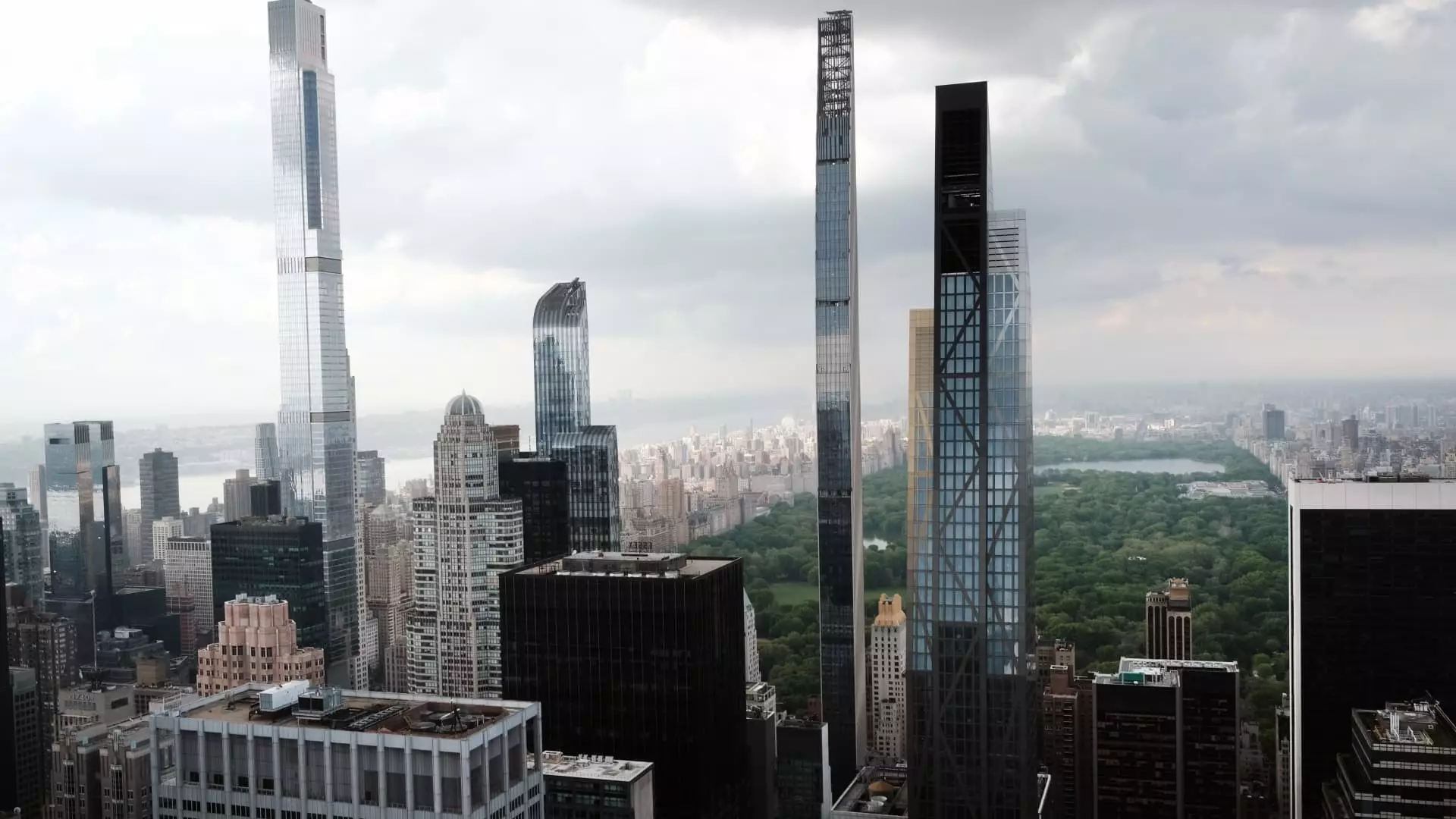Manhattan real estate has an uncanny ability to weather economic storms, and the latest reports reinforce this notion with a staggering 29% jump in apartment sales in the first quarter of 2023 when compared to the same period last year. The numbers showcase a fascinating snapshot: a record 2,560 closed transactions, up from 1,988, with total sales values hitting an impressive $5.7 billion, reflecting a remarkable 56% increase. This surge should send ripples of concern through the financial sector, as it reveals a preference shift among the affluent—individuals who, seeking stability in the unpredictable markets, flock to tangible investments like real estate.
From my perspective, this evolution in buyer behavior signals a noteworthy trend: the wealthy are not merely investing in bricks and mortar; they are safeguarding their fortunes amid stock market turbulence. When high-value apartments—those over $5 million—saw a remarkable 49% increase in sales, it was a clear indication that ultra-high-net-worth individuals are capitalizing on a landscape where traditional investments seem increasingly precarious.
Cash Rules: The Allure of Liquid Assets
Intriguingly, nearly 58% of the sales during this period were made in cash, with an overwhelming 90% of transactions exceeding the $3 million mark following suit. This begs the question: what does the heavy reliance on cash transactions reveal about economic confidence among the wealthy? It underscores a strategic pivot; they are turning their backs on the complexities associated with mortgage rates while focusing on what is often viewed as a more stable, appreciating asset class—real estate.
For many affluent buyers, particularly those engaging in the high-end segment of the market, cash purchases make sense, especially when considering the intricacies of financing amidst rising interest rates. The real takeaway? These transactions are not merely about buying property—they represent a calculated response to external economic conditions.
The Disparity in Market Segments
Interestingly, not all segments of the Manhattan real estate market are thriving equally. Properties priced in the “mid-market” range of $1 million to $3 million experienced a discouraging decline in signed contracts, down by 10%. This segment’s struggle highlights a growing divide in the housing market: buyers at the lower end (properties priced from $500,000 to $1 million) appear to have a brighter outlook, while the mid-market seems trapped in a limbo, squeezed by the overwhelming activity in the luxury sector and increasing economic pressures on the average consumer.
The implications of this division are profound. As the affluent gravitate towards assets that promise greater returns, middle-income buyers might become further alienated from the dream of owning property in one of the world’s most desirable locations.
The Boomerang Effect: Wealth Returning to Manhattan
As the city grapples with its ongoing evolution, we are witnessing a phenomenon being dubbed the “boomerang wealthy.” Individuals who fled Manhattan during the pandemic in search of spacious homes in states like Florida are now returning, lured back by the vibrancy and lucrative opportunities that New York offers. Bank mandates urging employees back to their offices are reversing remote work trends, further fueling the city’s appeal to the affluent.
This migration isn’t merely a homecoming; it represents a renewed faith in the Manhattan lifestyle. The influx of former residents serves as both a cultural and economic boon—reinforcing the notion that these properties are not just homes; they are symbols of status, opportunity, and legacy in one of the world’s most iconic cities.
Generational Wealth Transfer: A New Wave of Buyers
Perhaps most intriguing is the intersection of the “great wealth transfer” phenomenon with Manhattan real estate—a tidal shift as baby boomers pass down fortunes to their heirs. The new buyers entering the market, often the beneficiaries of substantial family trusts, are not just looking for a place to live; they are purchasing long-term assets they intend to hold for years to come.
This trend introduces a fresh dynamic in the market, reshaping buyer demographics and altering the competitive landscape. Real estate agents are astutely recognizing this shift, noting an uptick in activity from family offices focused on acquiring legacy assets. Investments in property may serve not only as wealth preservation but as a foundational strategy for the next generation of affluent individuals seeking longevity and stability.
In these fluctuating economic times, it’s clear that the horsepower driving Manhattan’s real estate sector isn’t a random oscillation but rather a testament to an evolving landscape. As luxury buyers snap up high-end properties and the mid-market stagnates, the rich continue to adapt—demonstrating that even amid uncertainty, wealth finds a way to invest.


Leave a Reply